|
      
|
|

|
| <
=== Menu |
===
> Tell
a friend |
|
This page is intended to
provide an insight into the family temple at Kulod in Rajasthan, so also to the Higher Secondary School being run by the temple trust.
Permissions and content material are on the way from the temple authorities and coverage will be updated shortly

|
|
Temple
details :
|
|
In the Hindu scriptures, there’s a saying, `if the measurement of the
temple is in every way perfect, there would be perfection in the
universe.’ Such is the importance of temples in our country. Temples
are the relief bases of humans which holds and possesses all the
religious fragments in one single roof.
|

|

|
Temples have various names concerning the different religions. Mandir,
Church, Masjid, Gurdwara, derasars. Temples are not merely a
construction of cement and bricks but it holds the serenity and the
pious air of worship, meditation, service and devotion. Namely, Pooja,
Dhyan, Seva and Bhakti in the true sense.
|
For Hindus, the square is the perfect shape and complex rules govern
the location, design and building of each temple, based on numerology,
astrology, astronomy and religious law. These are so complicated and
important that it’s customary for each temple to harbour its own
particular set of calculations as though they were religious texts.
|
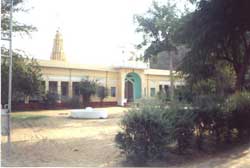
A view of the temple
|
|
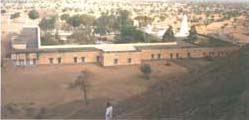
Ariel view of the temple
and the school complex at Kulod in Rajasthan
|
Essentially, a temple is
a map of the universe. At the center there is an unadorned space, the garbhagriha
(inner shrine), which is symbolic of the ‘womb-cave’ from which
the universe emerged. This provides a residence for the deity to which
the temple is dedicated.
|
Above the shrine, rises a superstructure
known as a vimana in south India and a shikara in north India,
which is the representative of Mt Meru, the cosmic mountain that
supports the heavens. Cave and mountain are linked by an axis that
rises vertically from the shrine’s icon to the finial atop the
towering vimana.
|
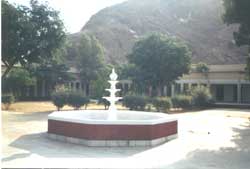
Courtyard of temple
& school complex
|
|
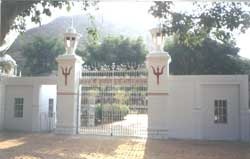
Main gate of the temple
complex
|
As a temple provides a shelter for a deity, it is sacred. Devotees
acknowledge this by performing a parkrama (clockwise
circumambulation) of it, a ritual that finds architectural expression
in the passageways that track round the main shrine. Some temples also
have mandaps (halls) connected to the sanctum by vestibules.
These mandapas may also contain vimanas or shikaras.
|
|
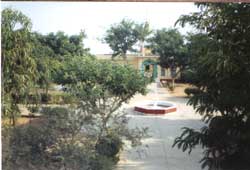
A view of the temple
|

The Story of Mateshwari ............ Hindi
Version
English Version
( Under Compilation )

How
to approach
Although,
there is no direct Rail or Air Link, the Kulodaya Durga Mandir can be
reached by Road from
Jhunjhunu City. This City is
approximately 185 k.m. from Jaipur or 230 k.m. from Delhi.
On reaching Jhunjhunu one has to take road going to "Guddha".
After traveling for 4 KM you reach Udavas and you see a board “ Kulodaya
Durga Mandir Secondary School” with a left arrow. This road leads to the
temple after 3.5 KM but is presently not very good one.
|
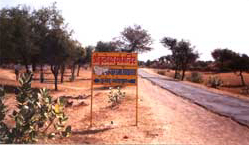
Sign board indicating the
location of the temple complex
|
|
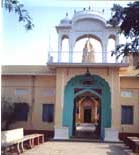
|
Instead travel
further 4 km on Guddha road and reach Narsinghpura and a similar borad
shows a road on your left which reaches the Temple after 1.5 KM. State
Transport Buses going to GUDDHA stop at Udavas and Narshinghpura and
Autorikshaw and Jeeps are available plenty at Jhunjhunu for the Temple and
back basis. Kulodaya Mandir is a temple of Goddess Durga, Laxmi and
Saraswati. A Higher
Secondary School is also being run in the same campus by the Temple
Management.
|

Travel
Arrangements:.....( under compilation )

|
Staying
Arrangements:...( under compilation )
|

School:....
|
|
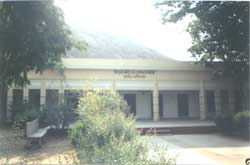
Higher Secondary School in
the temple complex at Kulod in Rajasthan |
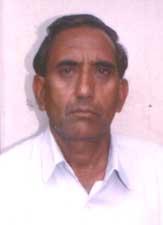
Mr.Madanlal Khaitan (
Headmaster )
|
|
Click
for temple
|
|

Donations:...( under compilation
)
Further updates under compilation
|
|
|
|